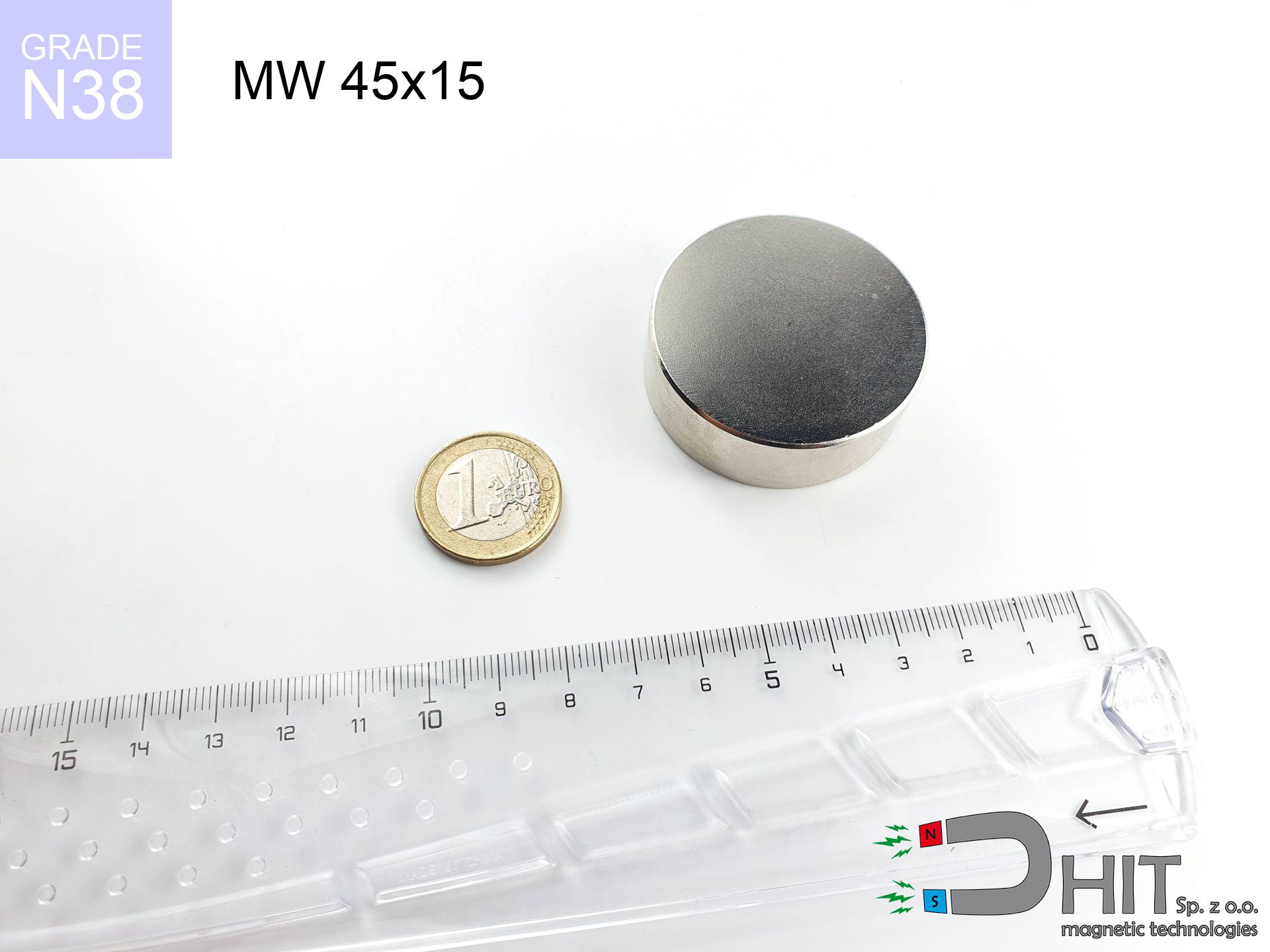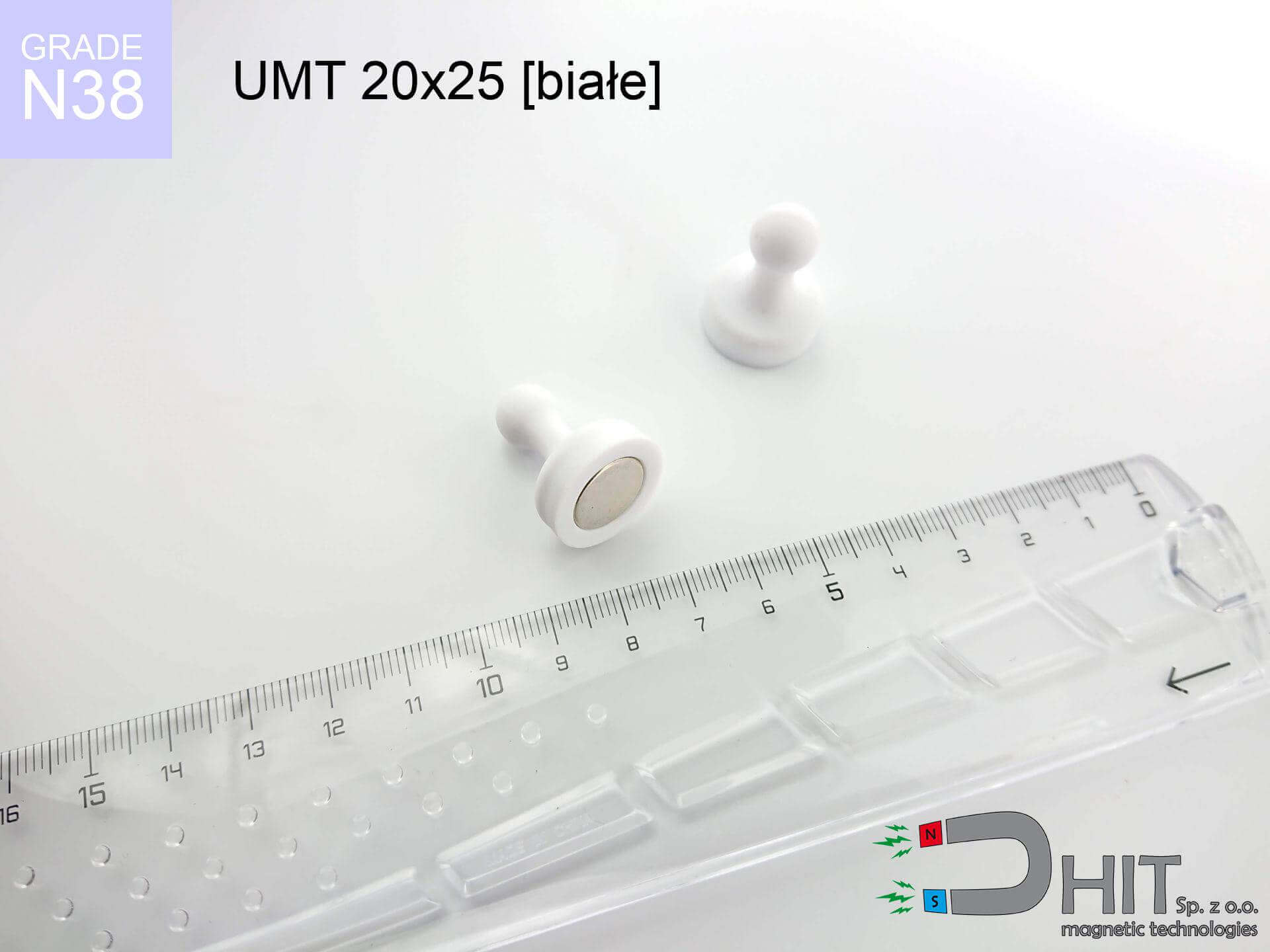SM 25x200 [2xM8] / N52 - magnetic roller
magnetic separator
catalog number 130364
GTIN: 5906301813125
diameter Ø
25
mm [±0,1 mm]
height
200
mm [±0,1 mm]
max. temperature
≤ 80
°C
catalog number 130364
GTIN: 5906301813125
diameter Ø
25 mm [±0,1 mm]
height
200 mm [±0,1 mm]
max. temperature
≤ 80 °C
615.00 ZŁ gross price (including VAT) / pcs +
500.00 ZŁ net price + 23% VAT / pcs
bulk discounts:
need more quantity?Do you have a dilemma in choosing?
Call us tel: +48 888 99 98 98 or write through form on the contact page. You can check the lifting capacity and the shape of magnet in our magnetic mass calculator magnetic mass calculator
Orders placed by 2:00 PM will be shipped on the same business day.
Specification: magnetic separator 25x200 [2xM8] / N52
Magnetic properties of the material N52
Physical properties of sintered neodymium magnets Nd2Fe14B
Choose recommended products
Advantages as well as disadvantages of neodymium magnets NdFeB.
In addition to immense strength, neodymium magnets have the following advantages:
- They do not lose strength over time - after approximately 10 years, their power decreases by only ~1% (theoretically),
- They are highly resistant to demagnetization by external magnetic field,
- In other words, thanks to the shiny coating of nickel, gold, or silver, the element acquires an aesthetic appearance,
- They have exceptionally high magnetic induction on the surface of the magnet,
- Magnetic neodymium magnets are characterized by very high magnetic induction on the surface of the magnet and can operate (depending on the form) even at temperatures of 230°C or higher...
- Thanks to the flexibility in shaping and the ability to adapt to specific requirements – neodymium magnets can be produced in many variants of shapes and sizes, which enhances their versatility in applications.
- Key role in the industry of new technologies – are utilized in HDD drives, electric drive mechanisms, medical equipment and various technologically advanced devices.
Disadvantages of neodymium magnets:
- They can break when subjected to a powerful impact. If the magnets are exposed to impacts, we recommend using magnets in a steel housing. The steel housing in the form of a holder protects the magnet from impacts, and at the same time increases its overall strength,
- High temperatures can reduce the power of neodymium magnets. Typically, after heating above 80°C, most of them experience a permanent loss in strength (although it is dependent on the form and size). To prevent this, we offer special magnets marked with the symbol [AH], which are highly resistant to high temperatures. They can operate even at temperatures up to 230°C, making them an ideal solution for applications requiring high-temperature operation,
- Due to their susceptibility to corrosion in a humid environment, we suggest using waterproof magnets made of rubber, plastic, or other moisture-resistant materials when using them outdoors,
- Limited ability to create threads or complex shapes in the magnet - the use of a housing is recommended - magnetic holder
- Health risk arising from small pieces of magnets pose a threat, when accidentally ingested, which becomes significant in the context of children's health. Furthermore, small elements of these devices can hinder the diagnostic process in case of swallowing.
Exercise Caution with Neodymium Magnets
Neodymium magnets should not be near people with pacemakers.
In the case of neodymium magnets, there is a strong magnetic field. As a result, it interferes with the operation of a heart pacemaker. Even if the magnetic field does not affect the device, it can damage its components or deactivate the entire device.
The magnet is coated with nickel - be careful if you have an allergy.
Studies show a small percentage of people have allergies to certain metals, including nickel. An allergic reaction often manifests as skin redness and rash. If you have a nickel allergy, you can try wearing gloves or simply avoid direct contact with nickel-plated neodymium magnets.
Neodymium magnets are the most powerful magnets ever invented. Their strength can shock you.
Make sure to review all the information we have provided. This will help you avoid harm to your body and damage to the magnets.
Dust and powder from neodymium magnets are flammable.
Avoid drilling or mechanical processing of neodymium magnets. If the magnet is crushed into fine powder or dust, it becomes highly flammable.
Do not give neodymium magnets to children.
Remember that neodymium magnets are not toys. Be cautious and make sure no child plays with them. They can be a significant choking hazard. If multiple magnets are swallowed, they can attract to each other through the intestinal walls, causing severe injuries, and even death.
Keep neodymium magnets away from the wallet, computer, and TV.
Neodymium magnets generate strong magnetic fields that can damage magnetic media such as floppy disks, video tapes, HDDs, credit cards, magnetic ID cards, cassette tapes, etc. devices. They can also damage devices like video players, televisions, CRT computer monitors. Remember not to place neodymium magnets close to these electronic devices.
Avoid bringing neodymium magnets close to a phone or GPS.
Neodymium magnets are a source of strong magnetic fields that cause interference with magnetometers and compasses used in navigation, as well as internal compasses of smartphones and GPS devices.
Neodymium magnets can demagnetize at high temperatures.
Although magnets are generally resilient, their ability to maintain their magnetic potency can be influenced by factors like the type of material used, the magnet's shape, and the intended purpose for which it is employed.
Neodymium magnets are extremely delicate, they easily fall apart as well as can crumble.
Neodymium magnets are characterized by considerable fragility. Neodymium magnetic are made of metal and coated with a shiny nickel, but they are not as durable as steel. At the moment of collision between the magnets, sharp metal fragments can be dispersed in different directions.
Neodymium magnets can attract to each other, pinch the skin, and cause significant swellings.
If the joining of neodymium magnets is not controlled, then they may crumble and also crack. You can't move them to each other. At a distance less than 10 cm you should have them very firmly.
So you are aware of why neodymium magnets are so dangerous, read the article titled How very dangerous are powerful neodymium magnets?.

![SM 25x200 [2xM8] / N52 - magnetic roller SM 25x200 [2xM8] / N52 - magnetic roller](https://cdn3.dhit.pl/graphics/products/sm-25x200-2xm8-jas.jpg)

![magnetic separator 18x200 [2xM5] / N42 magnetic separator 18x200 [2xM5] / N42](https://cdn3.dhit.pl/graphics/products/sm-18x200-2xm5-gig.jpg)

![magnetic holder internal thread 48x24x11.5 [M8] GW / N38 magnetic holder internal thread 48x24x11.5 [M8] GW / N38](https://cdn3.dhit.pl/graphics/products/umgw-48x24x11.5-m8-gw-val.jpg)

